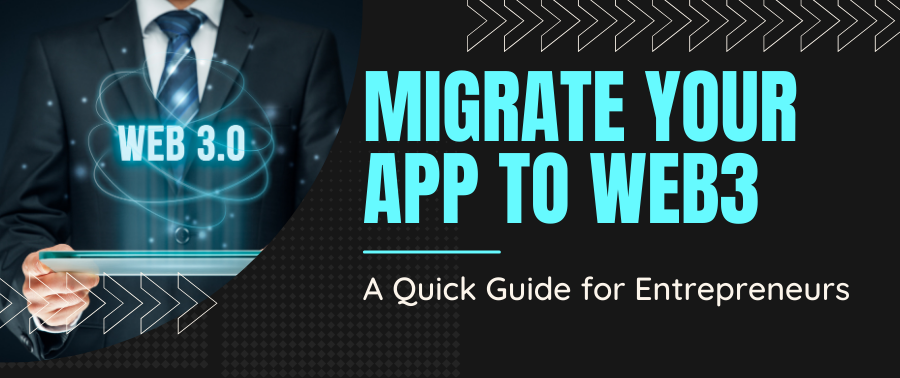We all know about Web2 applications; they have been here for decades. They gave us the power to connect, communicate and share information like never before. However, with the rise of blockchain, there's a new version of the web emerging, one that promises better opportunities for both users and developers. We're calling this new version Web3; it will transform how we interact with the web. Today, we will explore the differences between Web2 and Web3 and discuss different aspects you should know before migrating to Web3.
What is Web2?
Web2, a.k.a. "read/write web," refers to the second generation of the internet, the one we use today. It made web pages interactive and allowed users to interact, create content, and communicate with others. Hence, online services like digital payments, e-commerce, etc., boomed in the Web2 era.
Web2 is well-known for its user-generated content, software as a service with API integration, and more. Though Web 2 revolutionized the internet, it still has setbacks like a centralized structure, outdated details, lack of intelligence, fraud, etc.
What is Web3?
Web3, a.k.a the decentralized web, is the next-gen internet that aims to create an open, secure, and transparent web. Although it is still in a nascent stage, here are some of its features:
Unlike Web2, which works on centralized structures and is controlled by large corporations, Web3 works on decentralized techs like blockchain and peer-to-peer networks. Users can own the data, manage their online identities, and interact without intermediaries in Web 3.
Some of the key features of Web 3 are:
Blockchain: A decentralized digital ledger technology that offers secure data management.
Semantic web:
An extension of the web that makes data machine-readable so that computers can easily understand it.
3D graphics:
It helps create an interactive virtual world with an immersive experience.
Artificial intelligence:
NLP helps in personalized content recommendations, fraud detection, and automated smart contract execution.
Edge computing:
Decentralized data processing and computation to improve network efficiency and reduce latency.
Ubiquitous connections:
IoT devices increase connectivity with quick and efficient data transfer capabilities creating a network of decentralized applications.
Differences between Web 2.0 & Web 3.0
Web 2
- Corporations own and control it via centralized structures.
- Equal access is not given
- Transactions are done in fiat money
- Popular Web2 technologies are HTML, JavaScript, Ajax, and CSS3.
- Popular Web2 apps include social bookmarking sites, blogs, RSS feeds, and OTT sites.
Web3
- A decentralized ecosystem where ownership is distributed among builders and users, enabling peer-to-peer transactions without intermediaries.
- Everyone gets equal access
- Transactions are done in cryptocurrencies
- Popular Web3 technologies include ML, semantic web, deep learning, etc.
- Popular Web3 apps include AI-powered dApss, NFT marketplaces, virtual worlds, etc.
Aspects you should know before migrating
Data storage
Web3 apps have a completely different data architecture. Web2 apps store information on a single server, but Web3 apps store it on a distributed network. It ensures that user data belongs to the user and that no one else can use it for personal gains. So if you're migrating from Web2 to Web3, you should set up decentralized cloud storage.
Payment
Web3 works on cryptocurrencies, so you should shift from a payment gateway to a crypto wallet. A Web3 wallet will be your gateway to games, NFTs, DeFis, and other blockchain-based crypto apps.
User flow
User interaction will increase in Web3 because token-based transactions require smart contracts. So, users have to interact with smart contracts to buy, sell or transfer instead of relying on intermediaries.
Transactions that you need to store during migration
It is essential to store certain transactions in Web3 to ensure a smooth migration from Web2 to Web3:
- Storing information about token ownership whenever a user creates a token
- Saving the transaction history, including details about the current and previous owners, when a user buys or sells a token
- Storing the transaction details, such as the sender, receiver, and amount transferred, when a user transfers balance from one crypto wallet to another
Wrapping it up
There are numerous significant advantages of migrating your app from Web2 to Web3. It will offer your users more control over your data. But the whole upgrade process can be complex and time--consuming. So if you are planning to go for it, please ensure that the benefits outweigh the costs. If you plan to migrate, you should evaluate the specific use case for decentralization within your company before making any decisions.





Top comments (0)